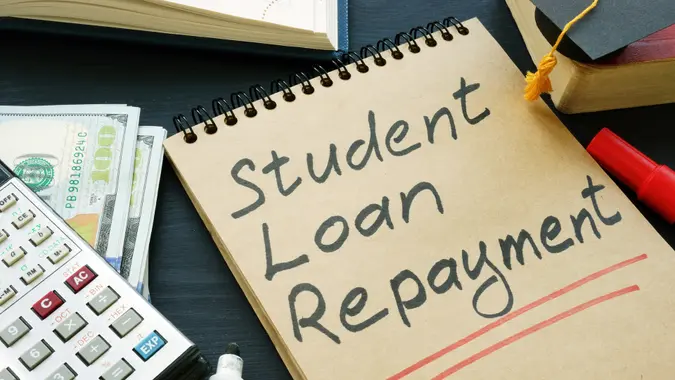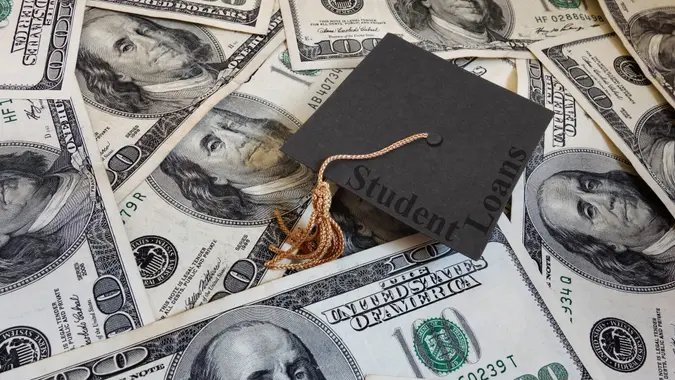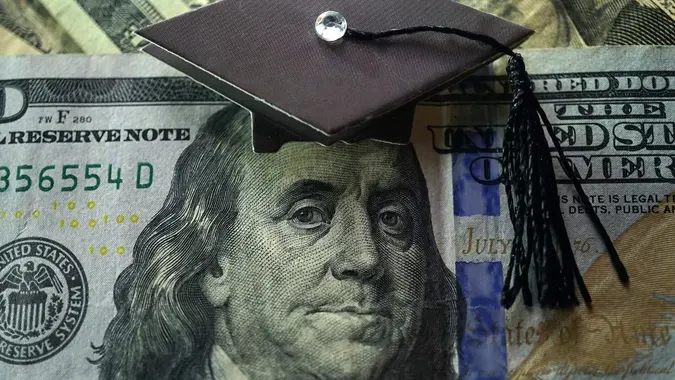Student Loan Survey: Most Borrowers Could Not Make Payment Today and Nearly One-Third Unaware of Pause Extension

Commitment to Our Readers
GOBankingRates' editorial team is committed to bringing you unbiased reviews and information. We use data-driven methodologies to evaluate financial products and services - our reviews and ratings are not influenced by advertisers. You can read more about our editorial guidelines and our products and services review methodology.

20 Years
Helping You Live Richer

Reviewed
by Experts

Trusted by
Millions of Readers
The federal student loan payment moratorium that went into effect in 2020 was designed to give borrowers financial relief during the COVID-19 pandemic, and put them in a better position to resume payments when the moratorium ended.
But two years on, many borrowers still aren’t financially prepared to begin making payments again, and a sizeable portion don’t even know that President Biden recently extended the payment pause, according to a new survey from fintech company Payitoff.
The survey of 1,000 student loan borrowers found that 52% of respondents said they couldn’t make a single monthly payment today if they had to. In addition, nearly one-third are unaware that Biden extended the payment pause until Aug. 31, 2022 last month.
More than six in 10 (64%) said they won’t make a single payment until legally required, while four in 10 “have no idea” if their payments will be higher or lower when the pause ends. Another 55% believe the pause will be extended again in August.
The fact that more than half of respondents are not in a financial position to resume payments shouldn’t come as a huge surprise, Payitoff CEO Bobby Matson told GOBankingRates.
“After two years of not paying their federal debt, most borrowers have already replaced that line item in their budget. Since few know about their flexible, federal repayment options (such as income-driven plans), most perceive that the first payment post-pause will be impossible to make,” said Matson, whose company provides student loan guidance and digital enrollments, and enables financial institutions to offer customers student loan refinancing and restructuring options.
Another problem, he said, is that 15 million borrowers changed servicers in the past year, “so many may not have up-to-date contact info with their new servicers.”
Sixty percent of the survey respondents said they have not taken any proactive steps to refinance, restructure or seek forgiveness of their student loans. Meanwhile, a similar percentage (61%) have used the money saved from the payment moratorium to pay for necessities such as gas and groceries. Around one-third have used the money they’ve saved on one of the following: savings, family/child care, or other debts.
Now many of those same borrowers say they wish they had put the money toward other things. If they had known the payment pause would have lasted this long, nearly one-quarter of respondents would have put the money into retirement savings, and one-fifth would have saved for a house or car.
Part of the problem is that many borrowers have been confused by the way student loan payments have been handled by regulators.
“This fact points to a broader issue that student loan borrowers have faced for decades: a lack of regulatory clarity, which makes it impossible to make large financial decisions,” Matson said. “How can I decide on a mortgage payment in my budget if I don’t know what my student loan payment will be?”
More From GOBankingRates
 Written by
Written by  Edited by
Edited by 

























